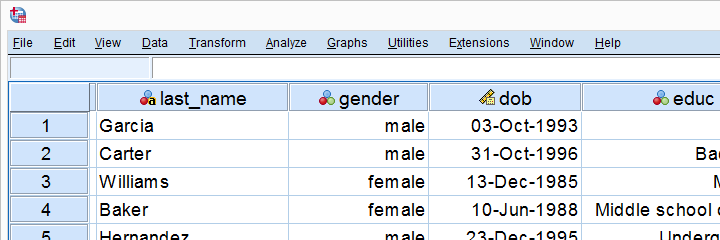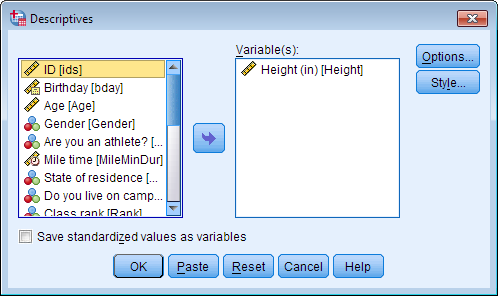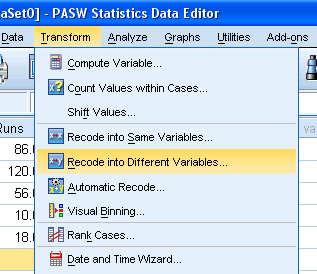

2564 Example 1 : Convert the data in range A3:D19 on the left side of Figure 1 to numeric form. DESCRIPTIVE STATISTICS FOR CATEGORICAL VARIABLES. Open Minitab and return to Stat > Basic Statistics > Display Descriptive Statistics. All descriptive statistics can be applied.
#Spss code range series#
describe () method on a Categorical will produce descriptive statistics in a manner similar to Series or DataFrame.
#Spss code range download#
Download the Excel file that contains the data for this example: HeightWeight. I see that the mean of the 3 categories is the proportion of the sample that falls within that category.

Not counting Excel users, there are only about 30 million programmers. To open the Compare Means procedure, click Analyze > Compare Means > Means.
#Spss code range how to#
As categorical data may not include numbers, it can be difficult to figure how to visualize this type of data, however, in Excel, this can be easily done with the aid of pivot tables and pivot Figure 3 – Categorical coding output. Choose the descriptive statistics at the data analysis menu. If there is a grouping variable (categorical or ordinal) descriptive statistics and plots The Logistics Regression data analysis tool cannot analyze non-numeric data, but alphanumeric data can be converted to numeric form using Descriptive Statistics. Deixe um comentário / Sem categoria Descriptive Statistics in Excel is a bundle of many statistical results. As has been mentioned, means, SDs and hinge points are not meaningful for categorical data. Univariate descriptive statistics focus on only one variable at a time. The number of data for each ECM category and their corresponding marginal empirical probabilities are represented in Define key concepts in descriptive statistics Collecting data for analysis & interpretation Quantitative, categorical variable.

To see how this works, take a look at this worksheet. Recall descriptive statistics consists of visual and numerical methods.

, Excel, Notepad, SPSS Data Editor) has a unique file To run the frequencies procedure select Analyze, Descriptive Statistics. For Descriptive statistics for categorical variables in excel. APA Style Sheet on Tables, Graphs, and Figures. In this unit we will learn how to describe categorical data and make inferences from it. If the Data Analysis command is not available, you need to load the A histogram is for quantitative data, and the x-axis is numeric. In the Data Analysis popup, choose Descriptive Statistics, and then follow the How do you compare categorical variables in SPSS? To create a two-way table in SPSS: Import the data set. The first step is to export that database so it’s available to … Descriptive statistics can be used to describe a single variable (univariate analysis) or more than one variable (bivariate/multivariate analysis). Descriptive Statistics for Categorical or Nominal Variables. Example: “Who would you vote for in the next election?” This also works for two-way percentages. 45 % of the sample has a low education Descriptive statistics (including Box plots and scattergrams) Compute basic descriptive statistics and draw charts on a large number of variables optionally divided into subsamples with a few clicks in Excel. Here is the formula we used in cell G2, which we copied down to the rest of the cells in column G: And here is the formula we used in cell H2, which In the Manage box, select Excel Add-ins and then click Go. Click on the Statistics button and click on Descriptives and Outliers. Place your IV into the "Rows" space and the Categorical DV into the "Columns" space. Pie charts are a popular way to display categorical data. To associate a format with one or more SAS variables, you use a FORMAT statement.


 0 kommentar(er)
0 kommentar(er)
